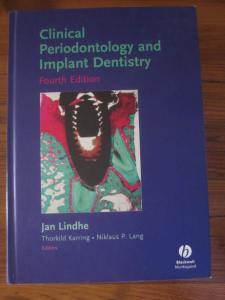Tagged: bad dentistry
Making the Public Aware?
While there is some evidence that shocking images of cancer and death on cigarette packs may have an impact on smoking behavior, it might be questioned whether ugly smiles (due to periodontitis and bad dentistry) would actually let patients hurry to their dentist doctor for prevention. The British Society of Periodontology will face, after BREXIT, enormous problems as most dental care has recently been provided by (cheaper) expat dentists with EU nationalities who now fear of being expelled soon.
Oral health in the Kingdom has always be considered awful. But that is a direct consequence of bad dentistry, not “tolerance” of the British people as was suggested here.
6 August 2016 @ 10:45 am.
Last modified August 6, 2016.
From Science Fiction Back to Reality?
I vividly remember a particular oral examination in Kuwait when the external examiner, a professor from Sweden, had not shown and I and then chairman of the surgical department, Tryggve Lie from Norway, had to quiz the bright candidate by ourself. It was quite an inspired exam, much about figuring out whether deeper understanding of underlying biological mechanisms of pathogenesis and healing of periodontal disease was present or not [1].
When we discussed periodontal regeneration, I asked the candidate at one point whether she could recall the cover of the new edition (the fourth, of 2003) of what is still referred to as Lindhe’s textbook. No, she said but we had a copy at hand. It had actually puzzled me for some time, in particular as the authors had not mentioned their source. It apparently showed a histological section of an implant which was in touch with two remaining roots. On page 658, in chapter 28 on Regenerative Periodontal Therapy, the image appears again. The legend tells,
Fig. 28-13. Microphotograph of a titanium implant placed in contact with retained root tips (a). A distinct cementum layer (arrows) and periodontal ligament (PL) in continuity with that on the roots (R) is visible on the implant surface.
A Plethora of Dental Problems Causing a Periodontal Abscess
Update below.
I have recently had an email exchange with a German colleague in which I had tried to correct certain misconceptions about Scandinavian Dentistry and its self-proclaimed superiority as compared to that of the “American”, “British” or “German” profession. Dental textbooks with “The Scandinavian Way” as a subtitle have fortunately vanished in the meantime. Maybe Scandinavians have understood (or were told) that “Am deutschen Wesen …” was a really bad example and did imply in fact frank racism.
A whole generation of, in particular, German periodontists has long been influenced by Scandinavian teachers and scientists such as Sigurd Ramfjord and Jan Lindhe, who had frequently visited the country, made friends with many colleagues and had an enormous impact on the development of modern Periodontology in Germany. I take pride of being a member of this generation and I have always tried to convey the messages by these and other Scandinavian giants in my discipline to contemporary students of Dentistry.
I remember vivid dicussions in the early 1980s in self-proclaimed dental elites like the Neue Gruppe, which was eager to invite both outstanding Scandinavian and American colleagues as speakers for their annual meetings, about whether the “Scandinavian approach”, which was allegedly “determined biologic”, should be favored when compared to the “determined mechanistic” treatment practiced by German dentists and, in particular “gnathologists”, who considered themselves a bit like “dental engineers”. “Biologic” more or less meant cause-related, and was mainly based on emerging scientific revelations from oral microbiology and immunology, oral physiology and biochemistry. The “mechanistic approach” on the other hand was mainly based on occlusion and a strive for improving “fit, form and function” of restorations which comprised nearly 100% of dental work in dental practice.
The truth lies somewhere in between, as usual. I am grateful for a profound education in occlusal concepts during both undergraduate and postgraduate education. Since, as a specialist, I used to treat patients who could usually not be treated by other colleagues, I was from the very beginning prepared to expand knowledge and skills to definitely restore periodontally mutilated dentitions with the necessary precision. Although being a specialist in Perio, comprehensive dental care has always been at the center of my treatment, the main reason why I had recently joined two dental schools which apparently favored respective concepts in dental education. I had not expected what I would encounter on a daily basis: bad dentistry.
The following case (and I want to warn the unprepared reader, graphic imagery may be disturbing) is in no way special and how it was treated before I was involved (and probably afterwards) is typical.
